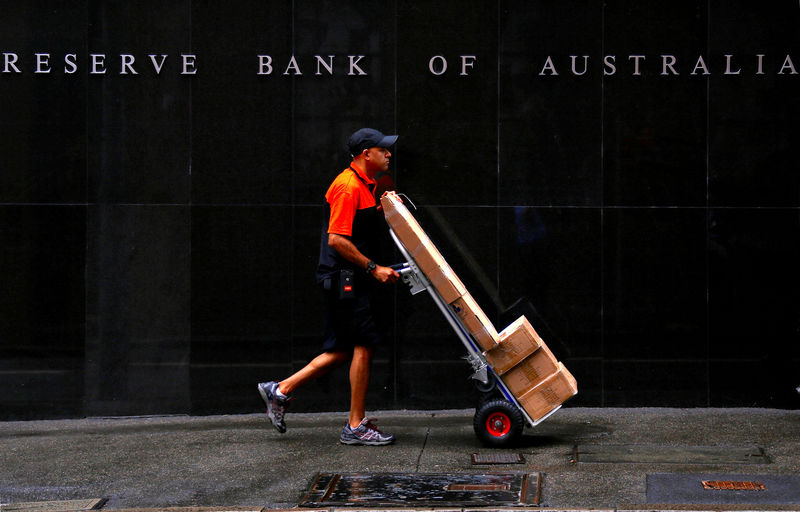 © Reuters. FILE PHOTO: A worker delivering parcels pushes a trolley past the Reserve Bank of Australia building in central Sydney, Australia
© Reuters. FILE PHOTO: A worker delivering parcels pushes a trolley past the Reserve Bank of Australia building in central Sydney, AustraliaBy Swati Pandey
SYDNEY (Reuters) – Australia’s top central banker said on Wednesday a downturn in Australia’s once-booming housing market was unlikely to derail the country’s enviable record of 27 years of recession-free expansion and urged banks to ease credit supply.
As property prices cool and household consumption slows, the labor market has become particularly critical for the Reserve Bank of Australia’s (RBA) monetary policy assessments, Governor Philip Lowe said in Sydney.
“A further tightening of the labor market is expected to see a gradual increase in wages growth and faster income growth. This should provide a counterweight to the effect on spending of lower housing prices,” Lowe said.
“The adjustment in our housing market is manageable for the overall economy. It is unlikely to derail our economic expansion.”
Australia’s A$1.8 trillion economy slowed in the second half of last year but the jobs market is going strong with the unemployment rate at a 7-1/2-year low of 5.0 percent.
Data out later in the day is expected to show the country’s gross domestic product growth of 0.3 percent in the final quarter of 2018, taking the annual pace to 2.5 percent.
The RBA left interest rates at a record low 1.50 percent for a 30th straight meeting on Tuesday and Lowe said the current setting was “clearly stimulatory” and one that is “supporting the creation of jobs and progress towards achieving the inflation target.”
On Wednesday, Lowe reiterated the RBA’s neutral stance on policy saying the risk for rates to move in either direction appear “reasonably evenly balanced.”
WATCHING CLOSELY
In his speech titled ‘The Housing Market and The Economy’, Lowe pointed to a large increase in the supply of homes as one reason for the property slowdown as real estate developers swarmed the market to build towering apartments.
For Lowe, the current housing correction was not “surprising” after prices surged over 50 percent in the five years to late 2017. Home values have since fallen about 9 percent bringing them back to their level in mid-2016.
As a result, the demand for loans has eased. Data out last week showed Australian home loans rose 4.4 percent in January, the weakest annual pace on record.
The RBA’s liaison with businesses suggests that, on average, the maximum loan size offered to new borrowers has fallen by around 20 percent since 2015,” Lowe noted.
“We are watching credit availability closely,” Lowe said.
“As lenders recalibrated their risk controls last year, the balance may have moved too far in some cases. This meant that credit conditions tightened more than was probably required,” he said.
“Now, as lenders continue to seek the right balance, we need to remember that it is important that banks are prepared to take credit risk. And it’s important that they have the capacity to manage that risk well. If they can’t do this, then the economy will suffer.”
Fusion Media or anyone involved with Fusion Media will not accept any liability for loss or damage as a result of reliance on the information including data, quotes, charts and buy/sell signals contained within this website. Please be fully informed regarding the risks and costs associated with trading the financial markets, it is one of the riskiest investment forms possible.
Source: Investing.com

























